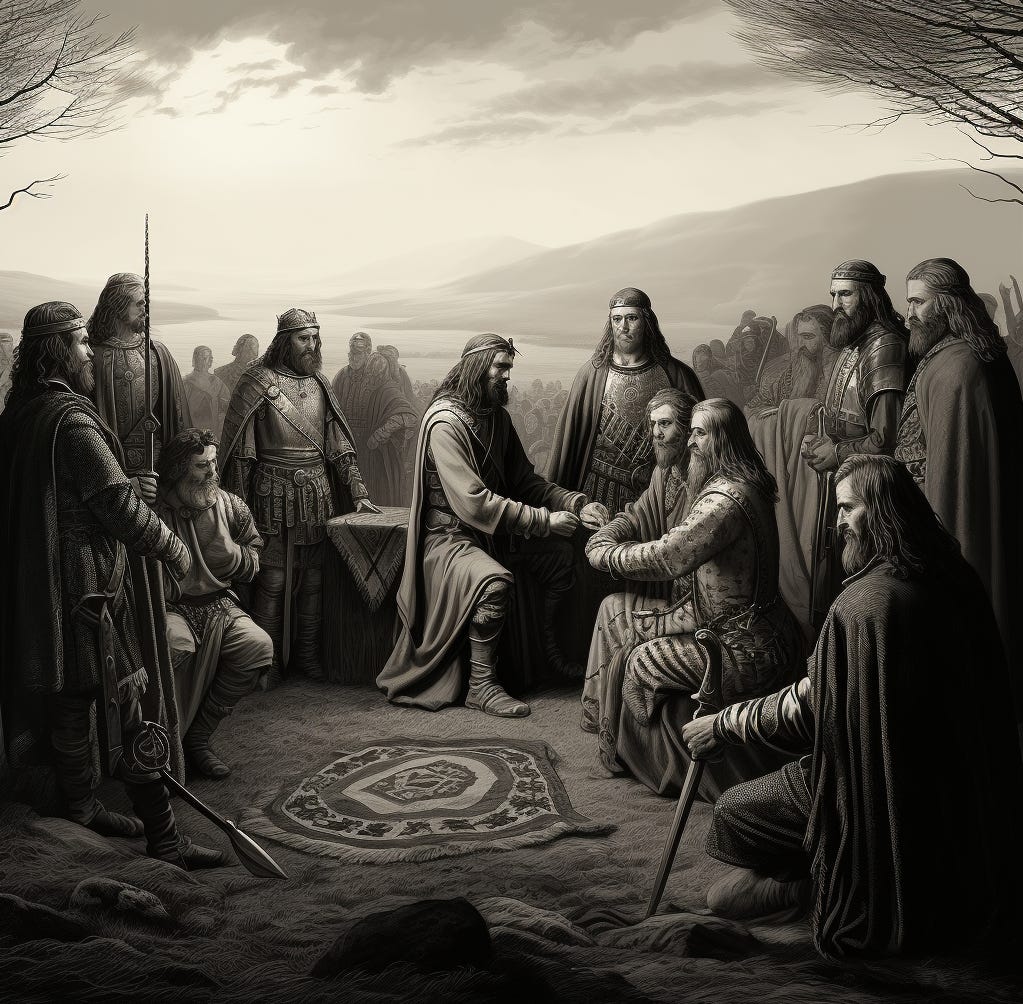The Intriguing Election System in Pictish Scotland
The Picts, shrouded in the mists of time and history, inhabited Scotland from around the 6th to the 9th century. Their name, resonating through the craggy highlands and whispered legends, is a beacon of ancient mystery and cultural depth. Among their most distinctive and intriguing traditions was the way they chose their kings. In the tapestry of early medieval Europe, where hereditary monarchy was the norm, the Picts painted a different picture.
A Unique Elective Monarchy
In stark contrast to the prevalent dynastic successions of Europe, the Picts championed an elective monarchy. This wasn't a democratic choice open to the masses but a selective process confined to the elite circle of tribal chiefs. Each chieftain, commanding his tribe with authority and respect, was a potential candidate for the Pictish crown. This system was a delicate balance of power, ensuring that the mantle of kingship was not merely a birthright but a position earned through leadership and wisdom.
In cases where the rightful heir was shrouded in uncertainty, the Picts resorted to a matrilineal system to resolve succession disputes. This method, emphasized by Bede in his historical accounts, underscores the Pictish society's unique emphasis on maternal lineage. In a predominantly patriarchal Europe, this practice was a rare and progressive approach, highlighting the Picts' respect for the role of women in lineage and succession.
The Intricacies of Pictish King Election
The process of electing a Pictish king was deeply rooted in the tribe's social fabric. It wasn't just about choosing the most powerful or the most popular. The chiefs had to consider tribal alliances, familial lineage, and, crucially, the capability of the candidate to lead. This system served as a check against the concentration of power, ensuring that the king was more than a hereditary figurehead. He was a leader chosen for his ability to unite the tribes and command respect.
The elective system of the Picts also mirrored the societal structure and values of their time. It reflected a sophisticated understanding of governance, where power dynamics within and between tribes were carefully balanced. The elected king had to navigate these complex relationships, proving his worth not just by lineage but by his skills in diplomacy and leadership.
The Transformation of the Pictish Kingdom
As the centuries progressed, the Pictish kingdom underwent significant changes, especially during the 9th century, when their culture began to blend with Gaelic traditions. This period marked a gradual shift from their unique elective system to a more hereditary form of monarchy. The merging of Pictish and Gaelic cultures led to the eventual fading of the Pictish kingdom, giving way to a united Scottish monarchy under leaders like Kenneth Mac Alpin.
This transition from an elective to a hereditary system marked a turning point in the political landscape of Scotland. It signified not only the end of the Picts as a distinct entity but also the rise of a new era in Scottish history. The elective system of the Picts is a testament to their progressive and complex societal structure. It challenges our understanding of ancient governance and shines a light on a culture that, though long gone, continues to captivate and inspire.
As we explore the annals of Scottish history, the legacy of the Picts endures, not just in their enigmatic stone carvings but in their unique approach to leadership and governance. Their system of electing kings is a narrative of power, lineage, and the eternal quest for effective leadership in the rugged and tumultuous landscape of ancient Scotland.





